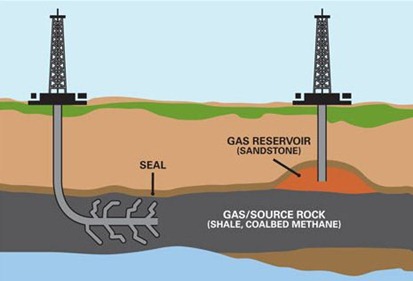On May 15, 2010, Mukesh Ambani went on record saying that crude prices could rise to $100 a barrel soon due to decline in refining growth and sluggish market. Even before the Reliance Industries patriarch announced this statement, the company had already started scouting for unconventional source of energy in the form of shale gas found abundantly in the US.
During second week of April, Reliance announced a JV with Atlas Energy for an investment of $1.7 billion to produce gas from shale in Marcellus region. The strategic significance of this move can be gauged from the fact that immediately in the ensuing month of June; Reliance yet again struck a buy out of 45% stake in shale gas assets owned by US-based Pioneer Natural Resources for $1.35 billion.
This points out towards the dramatic emergence of shale gas in the US and a resultant situation that has rendered the gas prices much affordable in the region. In fact, even India has huge shale deposits across many coastal areas apart from the largely untapped source of gas that can be found in shale’s across the world including Canada and even China.

Shale gas, which is locked in organic-rich sedimentary rocks, is found below the surface between two rock formations where shale acts as source for the natural gas. Earlier, the commercial exploitation of shale gas was largely uneconomical with the then obsolete drilling technologies. However, the advancement of technology led by horizontal drilling, allowed increasing the production zone lying across the wide widths of the rocks for the shale gas.
It is estimated that gas to be found from the Reliance-led JVs with Atlas Energy and Pioneer Natural Resources could be as big as the findings of natural gas from the deep offshore wells of Krishna-Godavari basin.
So, why is the shale gas exploration not carried out in India itself?
A report appropriately points out the reasoning for this being obstructive exploration policies. It says that currently the domestic exploration policies allow companies to produce only conventional oil and gas from their exploration blocks. In fact, when drilling for oil, every company hits shale deposits, but ignores any such potential as they’re not allowed to harness one.
Currently, Indian government has distinguished various priority sectors (such as fertilizers, power, etc.) which need to be feed with the natural gas requirements depending upon nature of their inevitable operations in favour of the country.
At such a time, how much is it justified that India’s giant exploration companies are reaching far away places to tap such resources, when the same is available in India too?
No, I am not putting blame on Reliance Industries to venture into the US for the shale gas reserves, leaving its homeland India aside. But, its India’s bad that its large reserves of shale gas in places such as Gujarat (at Cambay), Assam (at Arakan) and Rajasthan, amongst others, remain largely untapped due to regulatory hurdles which could be explored for efficient gas supplies to meet her growing fuel demands.
However, the government seems to be waking up to this thought gradually. Oil Minister Murli Deora has said that action is on to “developing a framework for an assessment of resource potential, which would lead to exploitation of this resource. Our intention and Endeavour is to put in place a policy framework in about a year’s time.”
Do you feel India should fast-track its agenda to tap shale gas from its territories?
